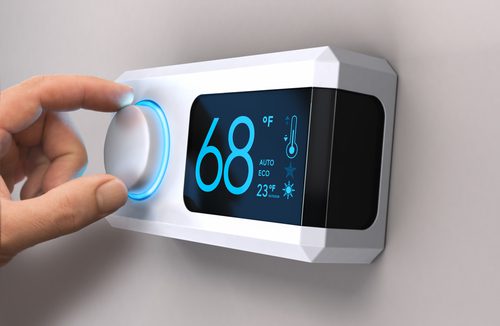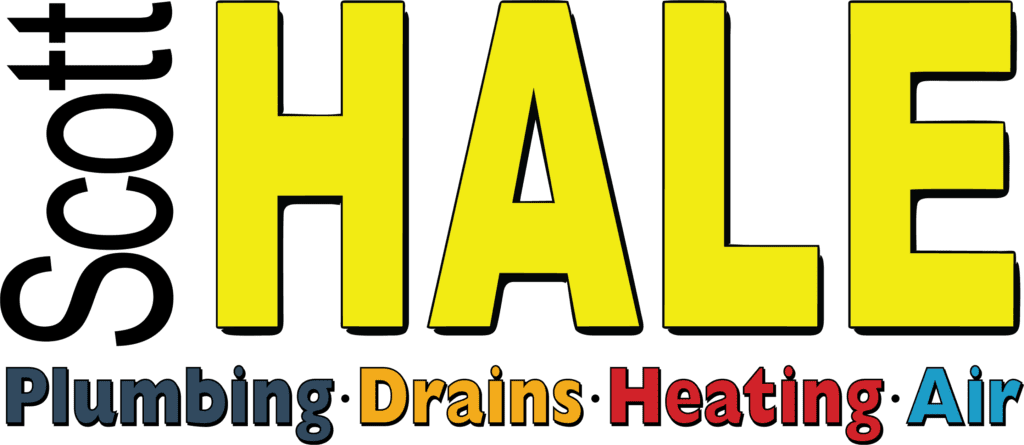5 Ways To Know If Your Thermostat Isn’t Working
Your thermostat is an essential component of your home that you use often but probably never think twice about, but it actually plays an integral part in your home’s heating system. No matter the age of your thermostat, issues can occur, and when they do, it’s important to notice the signs.
Though you might just assume you have a drafty house or there’s a problem with your heating system, it could be that your thermostat is not working properly. If you are continually struggling to keep your home at a suitable temperature, here are five signs that your thermostat isn’t working:

1. Bad Batteries
Sometimes, the problem can be as simple as old batteries. Other reasons that your thermostat isn’t fully functioning can be dirt, an unlevel box, and the thermostat location. These are all minor things that could be affecting your heating. So, if you are noticing that the thermostat number isn’t reflecting the way your home feels, first check the batteries and then go from there.
2. Thermostat Setting and Room Temperature Don’t Match
A bump in the wall can throw a mechanical thermostat off level and cause setting and temperature issues. To fix an unlevel thermostat, place a carpenter’s level just above the device and make adjustments until it’s level again.
If you have a mechanical thermostat, a frozen heat anticipator could be another potential culprit. Located under the cover of your thermostat, there’s a small disc with calibration marks located at the center.
It will likely have the words “Longer” or “Longer cycles” labeled on it. It will also have a lever arm and indicator relating to the calibration marks. This is the heat anticipator adjustment lever arm. Try gently pushing it in either direction to get it unstuck.
3. Furnace Is Repeatedly Turning On and Off
If your furnace just won’t seem to kick on or is continually turning on and off, your first thought might be that the furnace is the issue, but that’s not always the case. A dirty or unleveled thermostat could be the cause. Before you rule out your thermostat, check for build-up, adjust the temperature, and take note of the aftermath. If none of these seem to be the issue, it could be your furnace.
4. Thermostat Is Installed in the Wrong Spot
Consider the thermostat’s location in the home. Avoid placing the thermostat near heat sources such as lamps, electronics, or appliances, as it may register false temperatures and affect its accuracy. Exposure to drafts or direct sunlight can also impact thermostat readings.
Make sure the thermostat is installed in a location where it can accurately measure room temperature, preferably near the center of your home. Some smart thermostats have additional sensors that can be placed throughout the house to give your thermostat a better picture of the overall temperature.
5. Thermostat Is Programmed Wrong
Ensure that the programming aligns with your schedule, preferences, and the overall needs of your household. If you’re unsure about programming your thermostat or if you’ve experienced persistent issues, consider consulting the thermostat manually or seeking assistance from a professional HVAC technician.
Consider Upgrading Your Thermostat
Installing a programmable thermostat offers various benefits that contribute to energy efficiency, convenience, and enhanced control over your home’s heating system. Consider upgrading for optimal performance and additional perks.
Programmable Schedules
Smart thermostats enable you to create customized heating and cooling schedules based on your daily routine. You can set different temperatures for specific times, ensuring comfort when needed and energy savings when the home is unoccupied.
Zoning Control
Some advanced thermostats support zoning systems, allowing you to divide your home into different temperature zones. This capability enables you to control the temperature independently in various areas, optimizing comfort and energy efficiency.
Smart Alerts and Notifications
Smart thermostats can provide alerts and notifications for maintenance tasks, such as filter replacement or system diagnostics. This helps ensure that your HVAC system operates efficiently, further expanding its lifespan.
Reduced Carbon Footprint
By optimizing heating and cooling based on your actual needs, smart thermostats contribute to reduced energy consumption, leading to a smaller carbon footprint and a more environmentally friendly home.
Are you looking to keep your Salt Lake City home’s thermostat, heating, and air systems operating at their best or ready to upgrade your thermostat? Schedule your tune-up or installation with the experts at Scott Hale Plumbing, Heating & Air today.

